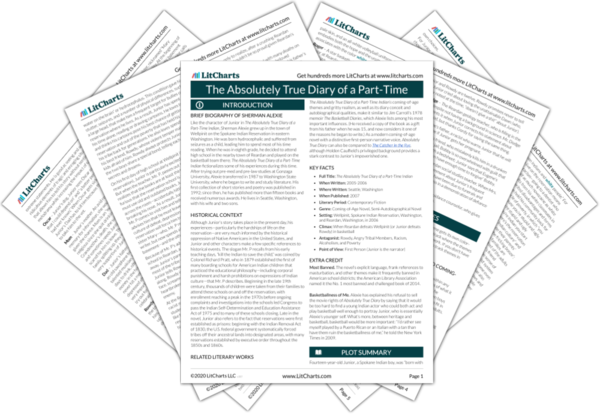“I don’t know if hope is white,” Junior states, thinking about the hopefulness of the white students in Reardan. “But I do know that hope for me is like some mythical creature: white, white, white, white, white, white, white, white.” He illustrates this with a cartoon of a winged horse, flying past fluffy, smiling clouds. For Junior, whiteness, both in the sense of skin color and more broadly, symbolizes hopes and dreams: things that are both desirable and seemingly unattainable, or even, perhaps, unreal. He wants the advantages and opportunities that the white students seem to have by birthright, but (at the beginning of the novel) doubts his ability to achieve or deserve them. He also feels guilty for having that desire, since it seems to require him to betray his tribe and falsely act as something he is not. Similarly, Junior’s blond-haired, blue-eyed semi-girlfriend Penelope is described as “all white on white on white, like the most perfect kind of vanilla dessert cake you’ve ever seen.” She’s the most popular girl in the Reardan freshman class, and Junior thinks everything about her is sexy, but she’s also an unattainable girl who doesn’t return his Valentine—and as Rowdy’s and Gordy’s comments on Junior’s obsession with her suggest, his love for this white girl may not be entirely pure, since it objectifies and partly reduces her to what she represents. Meanwhile, Penelope’s own wild dreams of travel are, in Junior’s eyes, “just big goofy dreams. They’re not real.” The color white thus symbolizes the complicated nature of dreams in this novel: inspiring and aspirational, but also, like Mary’s life of romance, sometimes false, and not always to be trusted.

